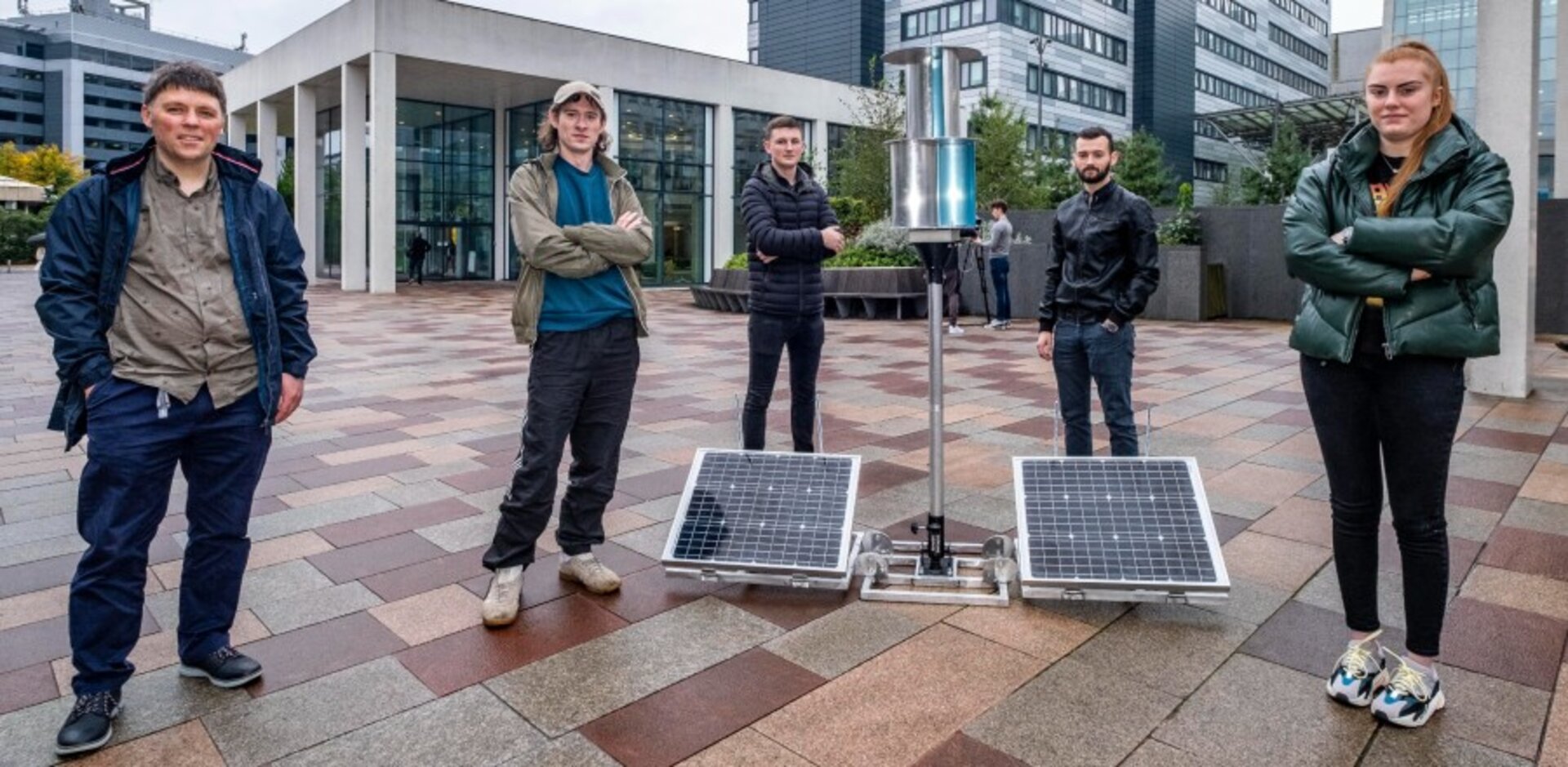Student engineers bring flat-pack wind turbine to COP26

A flat-pack wind turbine designed by a Scots school pupil and created by engineers at Glasgow Caledonian University (GCU) will be displayed at COP26.
The portable turbine, invented by Douglas Macartney when he was 15 and a pupil at Royal High in Edinburgh, will be showcased at the global climate summit’s Green Zone on November 7 after the idea was handpicked from 11,000 entries in a national competition run by the not-for-profit organisation Primary Engineer in 2019.
The idea has been developed by several teams of undergraduate engineers from GCU, working over several years to create a viable prototype – including the addition of two solar panels.
The original concept was inspired by a flat-pack refugee shelter created by Swedish furniture giant Ikea.
It’s hoped the turbine may one day be mass-produced to generate electricity for refugee camps where there is no access to a power source for cooking and lighting.
The device, which can be assembled without any specialist training, could also be used to help areas recovering from natural disasters and in rural settlements far from grid connection.
The Leader’s Award competition sees over 50,000 entries across the UK annually, with university teams choosing ideas to prototype. It is a Primary Engineer project and supported by a range of partners including the RAF, CAA, Network Rail, WEIR Group, Scottish Engineering and many others, who selected the wind turbine as one of 15 shortlisted concepts.
Dr Andrew Cowell, a senior lecturer at GCU and supervisor of the project, said: "It was a very mature concept. We've taken Douglas’s idea and put a lot of engineering thought into it.
“The prototype is small but the wind turbine could generate enough electricity to power a light and two USBs sockets in a disaster relief zone or a refugee camp. The recent addition of solar panels was inspired partly by Douglas’ original idea, and partly from feedback from an Innovate UK research bid partner. All our calculations show the concept is viable. It's a brilliant idea.”
Douglas said: “Working with the team at GCU has been great. It has been amazing to see how an idea on paper has been turned into a working prototype. I have found it interesting to see how it has evolved over time and the process of working on a project like this. It has brought many opportunities and has resulted in far more than I would have thought possible when I was coming up with the design.”
Primary Engineer strives to provide young people from all backgrounds the chance to access a career in engineering, science and technology by bringing engineers and an engineering curriculum into primary and secondary classrooms.
Dr Susan Scurlock MBE, founder of Primary Engineer and an honorary graduate of GCU, said: “We are delighted to showcase the work of GCU students, how they have taken a pupil’s drawing of an idea and made it into not only a physical object, but a wonderfully engineered and useful one at that. Our aim is to encourage the creativity of young people in solving problems and link that to the knowhow of engineers.”
